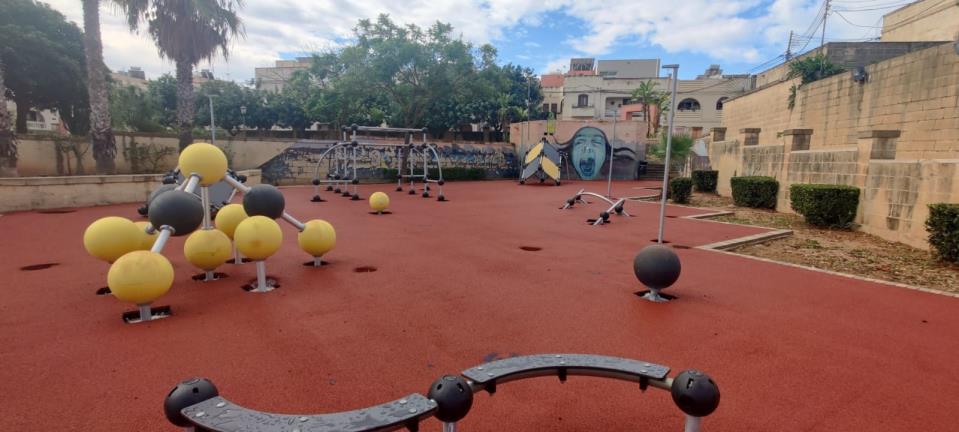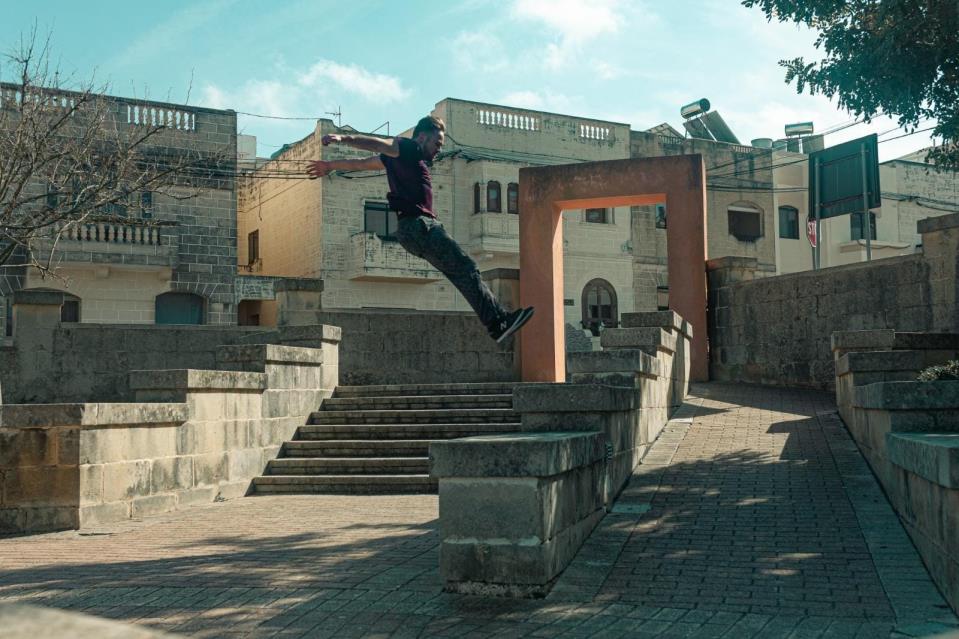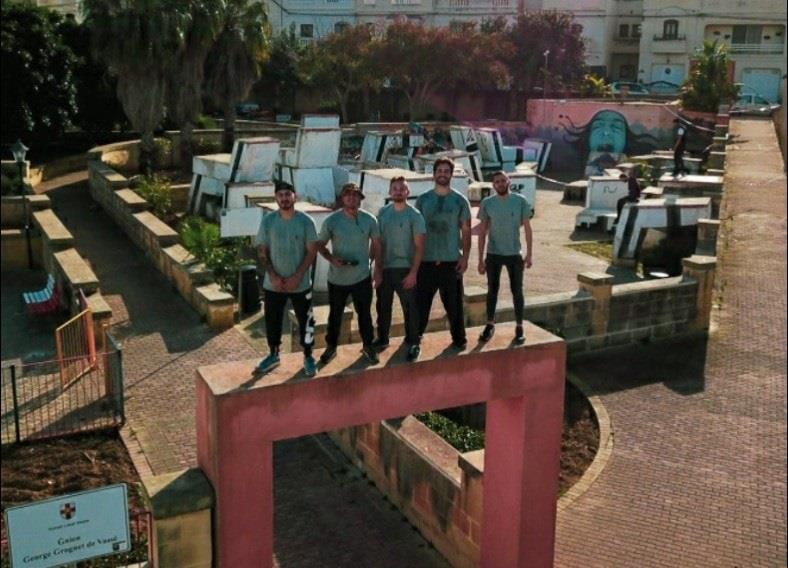The Mosta Local Council did not know what parkour was when this park was designed, a parkour enthusiast told The Malta Independent on Sunday. It’s like having a football game played in a triangular ground, it does not work, he added.
A space located in Ġnien Grognet de Vasse (known as Tal-Blata l-Għolja) in Mosta was meant to be a state-of-the-art parkour park, with dedicated equipment for parkour practitioners to practise their sport. Albeit the allotted space, and the equipment purchased, the park is far from being functional and “parkour friendly”.
“We were not consulted and the people who designed this park did not know what parkour was,” Leap Squad parkour member Manuel Borg said.
In 2012, although the parkour enthusiasts had the chance to speak to the Mosta Local Council before work on the park started and had their say on how the equipment ought to be installed, “the council ended up buying the stuff that was not right for us”.
Borg said that the currently installed “parkour equipment” is not good for the sport, despite being ordered from a parkour equipment website. “Another problem is that the equipment is not good on its own; it needs to be bought in conjunction with other things.”
He continued that the main scope of parkour is to connect one thing to another, such as jumping from one obstacle to the next; yet the current equipment “is so spaced out from each other that this defeats the purpose”.

Borg and the other practitioners have been training in Ġnien Grognet de Vasse for over 10 years, ironically finding more use and versatility in the surrounding walls, fences and pavements when practising parkour, instead of the ill-considered purchased equipment “as the things on their own have become useless”.
The enthusiasts are hoping that the local council will reach out to find an agreement in making this park beneficial for its proposed users, since “it was intended for parkour, yet it is not being used for parkour”.
The newspaper also asked Borg about the misunderstanding of parkour, both by the concerned institutions and the general public, especially on the “dangers” associated with the sport. “Parkour can be dangerous but it is not as unsafe as the public may think.”
He continued that there is a lot of thought and precision behind every manoeuvre, hence mitigating the risks. There are three main things that Borg highlights that ease the risks:
(1) training and knowing your body;
(2) always checking the surfaces; and
(3) training how to fall.

“We don’t just jump mindlessly; there is thought, practice and progression involved.”
“To have a place that is dedicated to us where we can safely train, would be the most beneficial thing,” Manuel said.
“Locally, a lot of people had to drop out from parkour due to other commitments, yet we are here to revamp this sport; to offer help to newcomers and people who wish to train.”
Borg stated that parkour can be for everyone, regardless of age: “Abroad there are even lessons for 60-year-olds, who regularly train parkour.” It is a sport which instigates movement, irrespective of the difficulty or pattern with which one decides to train: “you don’t have to jump far, you just have to move your body differently”.
He also mentioned that this sport can help the elderly with balance and coordination, which can be of help in preventing slips and falls. In addition, it can also be advantageous for children, physically and especially mentally. “In parkour, there is always the issue of fear; you have to find ways how to control it.”
People can practise parkour everywhere and anywhere, “the only things that you need are a set of walls or some obstacles that you can connect”, Manuel concluded.

What is parkour?
Parkour is a training discipline in which practitioners try to make it from point A to point B in the most fluid way possible, without assisting equipment and in the fastest and most efficient way possible. Similar to military obstacle course training and martial arts, parkour includes running, climbing, swinging, vaulting, jumping, rolling and whatever else it takes to arrive at the destination.
Parkour has been constantly evolving locally, including the commencement of new outdoor parks and parkour events. In 2010, parkour found its way to Mosta, where locals used to train at Ġnien Grognet de Vasse after taking inspiration from foreign parkour practitioners on YouTube. Leap Squad is a leading parkour group in Malta, offering lessons to children and enthusiasts, while being a catalyst for the parkour community to grow.
For more information on Leap Squad visit: https://www.facebook.com/leapsquadparkour/